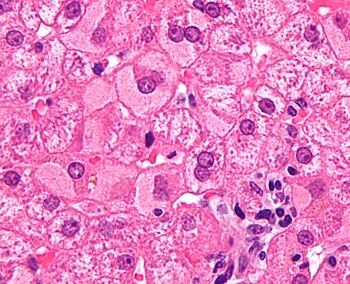beta oxidation will give 8acetylcoA,7 NADH and 7FADH2
8AcetylCoA will yield--->24 NADH+8FADH2+8GTP(kreb's cycle)
1 NADH yields 3 ATPs
1 FADH2 gives 2 ATPs
(7+24)=31NADH; ( 7 + 8 )=15 FADH2;8GTP
total ATP=31*3+15*2+8=131
2 ATPs r used to activate palmitate to palmitoyl coA==>net ATP=131-2 =129
Therapeutic uses
The therapeutic uses of trimetaphan are very limited due to the competition from newer drugs that are more selective in their actions and effects produced. It is occasionally used to treat a hypertensive crisis and dissecting aortic aneurysm, to treat pulmonary edema, and to reduce bleeding during neurosurgery.
Cancers
PTEN is one of the most commonly lost tumor suppressors in human cancer. During tumor development, mutations and deletions of PTEN occur that inactivate its enzymatic activity leading to increased cell proliferation and reduced cell death. Frequent genetic inactivation of PTEN occurs in glioblastoma, endometrial cancer, and prostate cancer; and reduced expression is found in many other tumor types such as lung and breast cancer.
Ground glass hepatocyte
In liver pathology, a ground glass hepatocyte, abbreviated GGH, is a liver parenchymal cell with a flat hazy and uniformly dull appearing cytoplasm on light microscopy. The cytoplasm's granular homogeneous eosinophilic staining is caused by the presence of HBsAg.
The appearance is classically associated with abundant hepatitis B antigen in the endoplasmic reticulum, but may also be drug-induced.[1][2] In the context of hepatitis B, GGHs are only seen in chronic infections, i.e. they are not seen in acute hepatitis B.
NORMAL WEIGHT BRAIN ADULT: 1300 -1400 G
Myeloperoxidase
| edit |
| Myeloperoxidase | |||||
|---|---|---|---|---|---|
 Myeloperoxidase drawn from PDB 1D7W. | |||||
| |||||
| Identifiers | |||||
| Symbols | MPO; | ||||
| External IDs | OMIM: 606989 MGI: 97137 HomoloGene: 55450GeneCards: MPO Gene | ||||
| EC number | 1.11.2.2 | ||||
| |||||
| RNA expression pattern | |||||
 | |||||
 | |||||
| More reference expression data | |||||
| Orthologs | |||||
| Species | Human | Mouse | |||
| Entrez | 4353 | 17523 | |||
| Ensembl | ENSG00000005381 | ENSMUSG00000009350 | |||
| UniProt | P05164 | Q571G0 | |||
| RefSeq (mRNA) | NM_000250.1 | NM_010824.2 | |||
| RefSeq (protein) | NP_000241.1 | NP_034954.2 | |||
| Location (UCSC) | Chr 17: 56.35 - 56.36 Mb | Chr 11: 87.61 - 87.62 Mb | |||
| PubMedsearch | [1] | [2] | |||
Myeloperoxidase (MPO) is a peroxidase enzyme (EC 1.11.1.7) most abundantly present in neutrophil granulocytes (a subtype ofwhite blood cells). It is a lysosomal protein stored in azurophilic granules of the neutrophil. MPO has a heme pigment, which causes its green color in secretions rich in neutrophils, such as pus and some forms of mucus.
Function
MPO produces hypochlorous acid (HOCl) from hydrogen peroxide (H2O2) and chloride anion (Cl-) (or the equivalent from a non-chlorine halide) during the neutrophil's respiratory burst. It requires heme as a cofactor. Furthermore, it oxidizes tyrosineto tyrosyl radical using hydrogen peroxide as an oxidizing agent.[2]
Hypochlorous acid and tyrosyl radical are cytotoxic, so they are used by the neutrophil to kill bacteria and other pathogens.

No comments:
Post a Comment